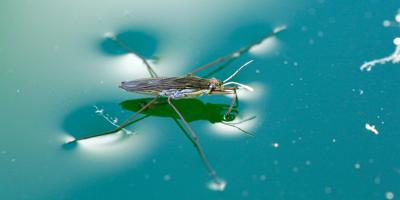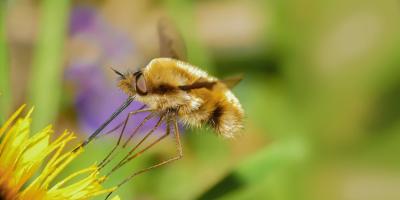PSA: Cockroaches Usually Come in Peace

Cockroaches aren’t all bad, you know. Seriously -- out of about 4,000 distinct species, only four are considered nuisance species in New England: German, American, Oriental and brown-banded cockroaches. Besides those four bad actors, the vast majority of roaches are actually beneficial insects, meaning the world is a better place with them in it. Problem is, unless you’re an entomologist, telling the difference between a good cockroach and a bad cockroach can get a little buggy.
The “Good” Cockroaches
Beneficial cockroaches are usually given the moniker “wood roach” to distinguish them from the icky, crawling-the-kitchen-floor-at-midnight variety. The most common wood roach species is the Pennsylvania wood roach, which, as the name suggests, hails from the Keystone state. To the untrained eye, Pennsylvania wood roaches can easily be mistaken for their more sinister cousins, the German cockroach, which are the number-one nuisance cockroach in New England.
However, the most common cockroach species worldwide, German cockroaches, are usually much smaller, coming in at around half an inch in length compared to the Pennsylvania wood roach’s 3/4 to 1-1/4 inches. Wood roaches also have a pale white or transparent stripe on the outer edge of their thorax, whereas German cockroaches are marked with dark parallel streaks running from their heads to the base of their wings.
If you’re not completely sure which of the two you’re looking at, snap a clear photo and send it to an entomologist like our own Dr. Gary to confirm the identification. Or go one better and actually capture a specimen in a glass jar or plastic lidded container.
Wood roaches typically live in moist outdoor areas like wood piles or inside decaying logs, as well as under the loose bark of trees and fallen timber. If they do find their way into your home it’s almost always by accident, from hitching a ride on some firewood brought in from outside or crawling through a crack in your home’s exterior. Another telltale sign is that wood roaches are not light-sensitive, so you’re likely to encounter them at any time of day, not just at night like the typical cockroach home invaders. If you do encounter one at night, just shine a light on it: if it doesn’t flee back into the dark, it’s probably a wood roach and not a concern to you or your household.
Wood roaches can’t reproduce indoors, so you don’t have to worry about a family shacking up with you if you do see one scurrying around. And while there’s no compelling reason to worry about keeping wood roaches out of your home, some general preventative measures that also work to keep out bonafide pests and nuisance insects might give you better peace of mind.
Refuse Roaches of Any Kind
Believe it or not, a preventative ant treatment around your home will work just as well at keeping wood cockroaches from entering. This is also a service we include in our popular Home Protection Plan, which guards against the 50 most common household nuisances (including all types of cockroaches, whether they are officially considered “pests” or not).
Of course, sealing up any cracks or holes in the exterior of your house is always a good idea, both to keep out pests and to save on utility costs. And be sure to check for hitchhikers any time you bring firewood indoors.
For more information about these pests and how to keep them out of your home, contact us today to speak with a representative.



